Journey on the Trans-Siberian: The Packing List
This is part of a series about my journey across Russia on the Trans-Siberian Railway, from St Petersburg to Vladivostok, in the summer of 2018. This part covers my packing list.
If you’re planning to ride the Trans-Siberian Railway across Russia, you can use this packing list as a starter, as inspiration, or just for comparison. If you have no intention of ever sharing a train cabin with Russian strangers for a week, then you can use this list to justify your decision.
If you don’t care for explanations then skip to packing list.
For context, nine days of the trip were spent on the train, and the rest were spent at different cities along the route. I had to be prepared for a variety of scenarios, from onboard lounging, to city flanerie, to posh fashion shows, to all-night dancing.
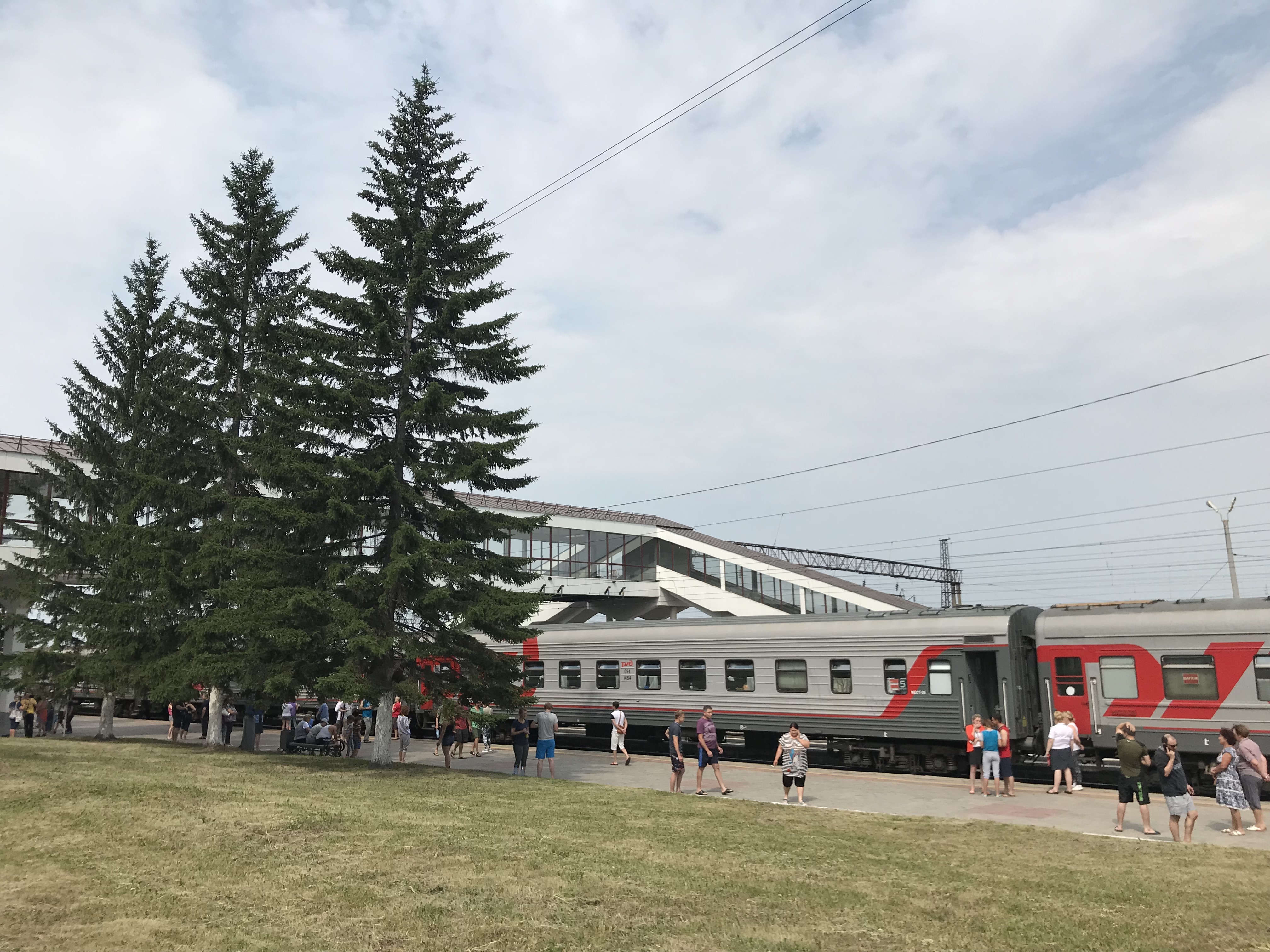 The train stopped somewhere in Siberia on a warm June day.
The train stopped somewhere in Siberia on a warm June day.
Siberia in June is warm but not too hot or humid, and train cars maintain a temperature suitable for life. Taking the same trip in the winter would expose you to more extreme temperatures outside and inside, as the air cools to around zero degrees Fahrenheit and the heaters inside overcorrect to sauna conditions.
The packing list, for me, had several objectives:
-
Maximize freedom of movement. Travel is more fun and less stressful when you can adapt to a change of plans, go to a new place, jump into a cab, or commit to an overnight detour at a moment’s notice. Travel is also safer if you can escape an iffy situation by swinging a backpack over your shoulder and getting out.
-
Minimize attention on myself. Blending in with locals makes you a less obvious target. It also helps increase interaction with locals, since many will avoid tourists.
-
Keep it simple. No need to check emails, answer calls, baby a camera lens, cry over rips and stains, or waste time on anything other than soaking and participating in the surroundings. The secret to great travel stories, besides exaggeration, is to stop focusing on yourself and to look outward.
Onwards to the list…
What I Packed for the Trans-Siberian Railway
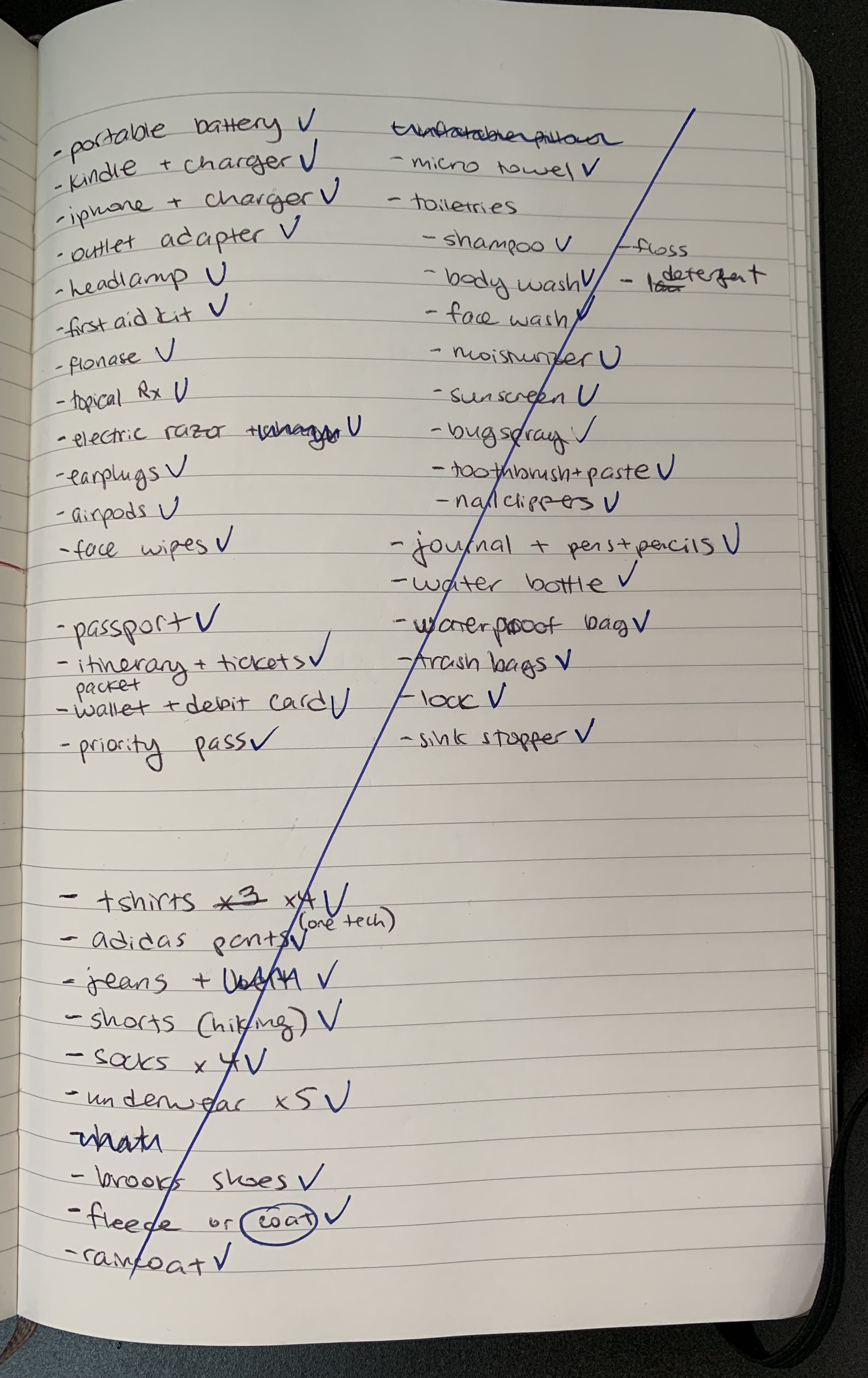 My packing list for the Trans-Siberian Railway trip.
My packing list for the Trans-Siberian Railway trip.
☑ Backpack
I travel with a small, 25-liter backpack and take only what fits inside. This requires rewearing clothes, doing laundry, and resupplying on toiletries along the way.
A small backpack lets you get on and off trains faster, squeeze past eyeing Russians in the narrow hallways without upsetting them, and easily store your belongings in the storage space beneath the bed. (In the four-person cabins, known as 2nd-class, the storage space below the bottom bunk is meant to be shared with the person on the top bunk.)
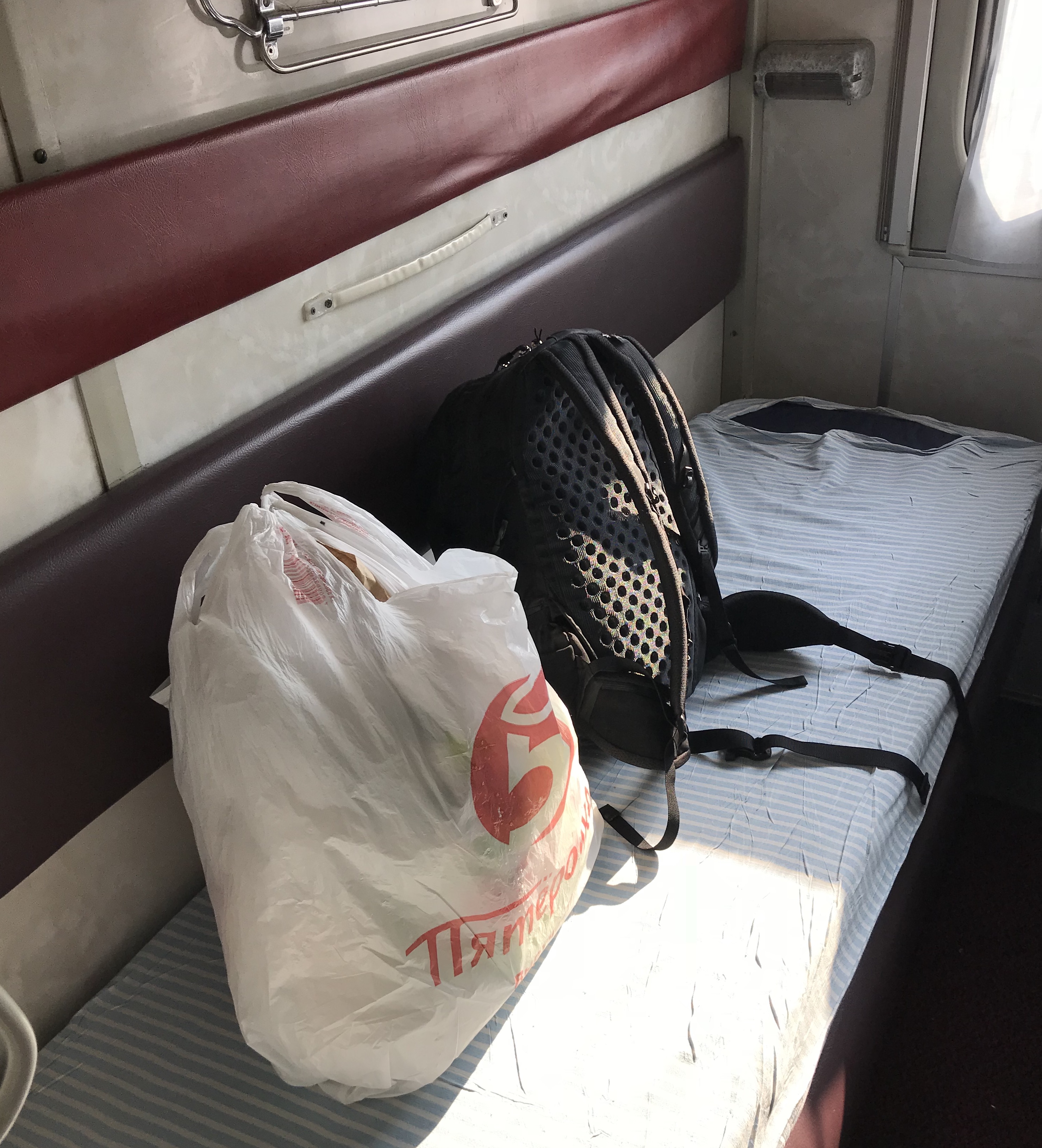 A small backpack can hold everything needed for the trip.
A small backpack can hold everything needed for the trip.
☑ Kindle and charger
It’s nice to have something to read during the inevitable down time, even more so if it’s about Russia. I recommend Travels in Siberia (non-fiction), Midnight in Siberia (non-fiction), A Terrible Country (novel), City of Thieves (novel), and anything by Dostoyevsky.
☑ Phone, charger, and SIM card (buy at airport)
The iPhone is a camera, alarm clock, mirror, flashlight, emergency phone, notepad, map, translator, communication device, music player, and emergency Googling machine. I recommend restoring the phone to factory settings and removing all apps containing personal data before traveling abroad.
Major airports will have at least one cellular store where you can buy and install a prepaid SIM card for making local calls and for using cellular data. There’s cell reception in the train stations along the route, but no WiFi. There is no cell reception outside of towns and train stations, so plan to make calls, send messages, download music, and look up any information before you leaving the stations. Even at stations the cell reception can be weak and the stops can be as short as two minutes.
 Conductor and passenger getting air during a stop.
Conductor and passenger getting air during a stop.
☑ Airpods
Easy to pop in for a quick dose of American rock, Russian pop, or a phone call back home. Easy to lose, too, so keep them close.
☑ Outlet adapter
Russia uses round, European-style electrical outlets, types C and F.
☑ Portable battery
There are four outlets in each 2nd-class car that everyone must share. Some newer cars have one outlet in each cabin for the four occupants to share. That means you may not be able to plug in whenever or however long you want, unless you have your own portable battery
☑ Headlamp
If you need a more reliable and durable light source than your phone, such as on evening hikes or mid-night rummaging through bags, a compact headlamp gets the job done. A red-light option allows for reading in bed without disturbing sleeping cabin mates.
☑ Electric razor
Wear that scruffy russian or adventure-traveler look. This was an extravagance since a plain razor would have been smaller and lighter. One benefit of minimalism is having room for the occasional splurge.
☑ First-aid kit
A small kit with bandages, pain relievers, tablets for upset stomach, and other items for dealing with minor health issues.
☑ Journal and pens
Journaling will ensure an almost-accurate retelling of the journey months later. Also useful for writing down half-baked business ideas, interesting Russian words, and contact information of people you meet.
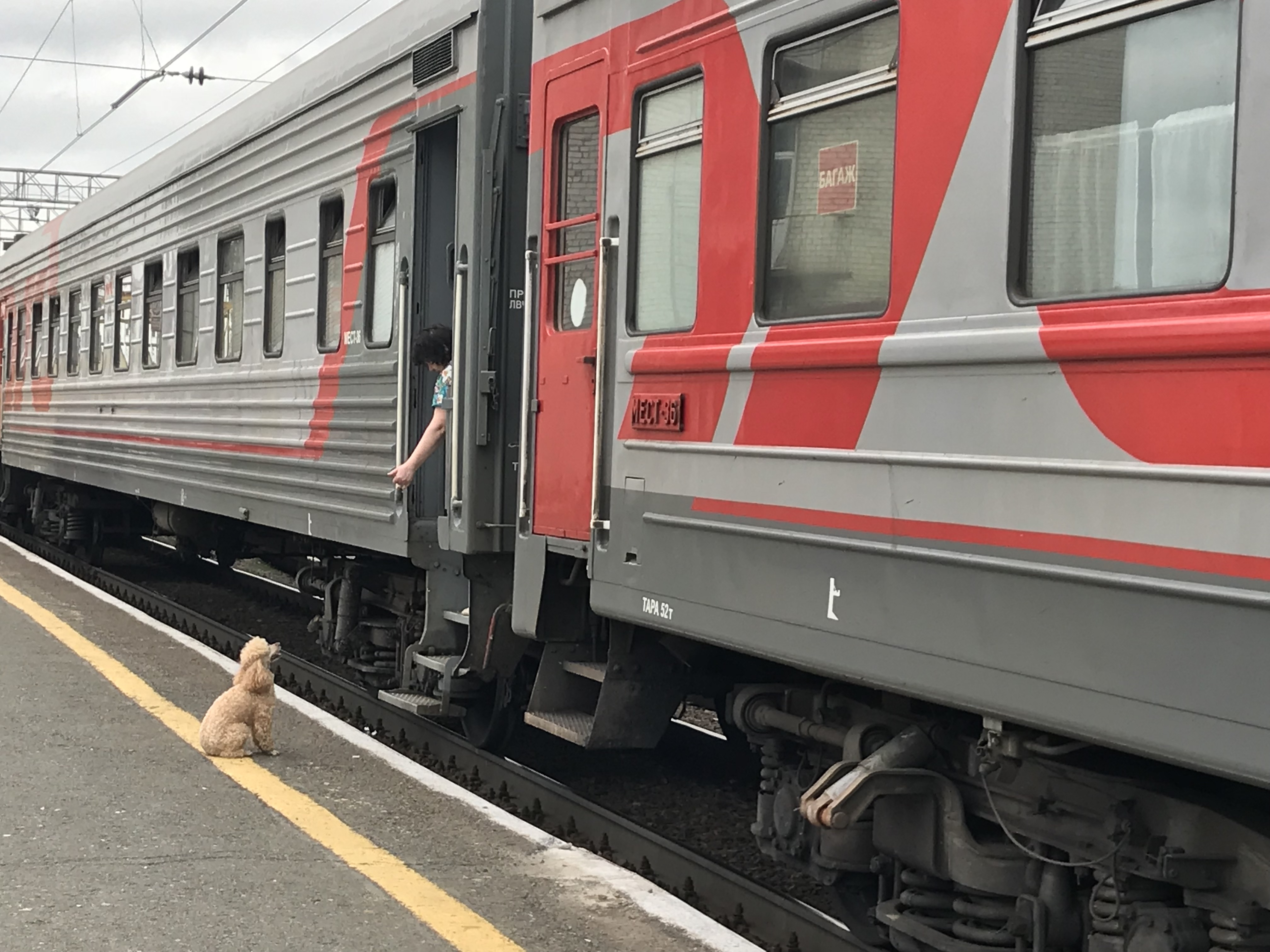 Dog is invited back on the train after a quick walk.
Dog is invited back on the train after a quick walk.
☑ Small pouch
Small waterproof pouch for things you want to take with you kayaking on Lake Baikal, if the weather allows it.
☑ Medium nylon pouch
Any medium-sized bag or pouch would do for storing dirty clothes between washes. Also doubles as a pillow when it’s full.
☑ Small lock
Small travel lock with a braided wire to lock up belongings in hostels. Most hostels provide storage cubbies but few provide the locks.
☑ Sink stopper
A terrific one-dollar purchase. This round, flexible thing is used to cover sink drains, allowing you to fill the sink with water and hand-wash laundry. Some hostels and hotels offer laundry services for a small fee. It’s a great feeling to return from a day of traipsing around a muggy town and see clean clothes neatly folded and ready for another few days of wear.
☑ Sleeping mask
It helps to have a sleeping mask for daytime naps or early bedtimes.
☑ Passport, visa, and copies
I’m not touching the visa subject here. Just get it, bring it with you, and bring a copy in case you lose the original.
☑ Itinerary and train tickets
All train seats are assigned ahead of time and there is no flexibility. There is no hopping on and off whenever you please, so follow the itinerary.
Some conductors will have a printed or digital list of passengers, so they may just check passports and not tickets.
One day, halfway into the trip and three time zones away from Moscow, you will look at the next segment’s ticket and think you missed the train. You will then make some panicked calls and blame yourself until you realize—or someone reminds you—that departure and arrival times shown on tickets are in Moscow time. The weight of an elephant herd will slip off your shoulders.
☑ Credit card and debit card
Credit cards are accepted in many places, and ATMs abound.
☑ Micro-towel
Always bring a towel. A small, quick-dry towel works great when hostels don’t have or charge too much for towels, and for use on the train. The train bathrooms do not have paper towels.
☑ Toiletries
Everything travel-sized. You can get more on-site, although you may have to settle for off-brand options. Shampoo, body wash, face wash, moisturizer, sunscreen, bug spray, toothbrush and toothpaste, nail clippers, floss, detergent, and prescriptions.
☑ Earplugs
Noise permeates the train at all hours. The train rocks, neighbors snore, loose items shake, wheels squeak, and railroad ties creak.
☑ Face wipes
The faucets aboard trains must be pressed for water to run, so hand- and face-washing becomes a messy one-hand operation. Just as well, since the sink can fit only one hand at a time. It’s easier to use a moist face wipe than attempt any kind of hygiene routine in the bathroom.
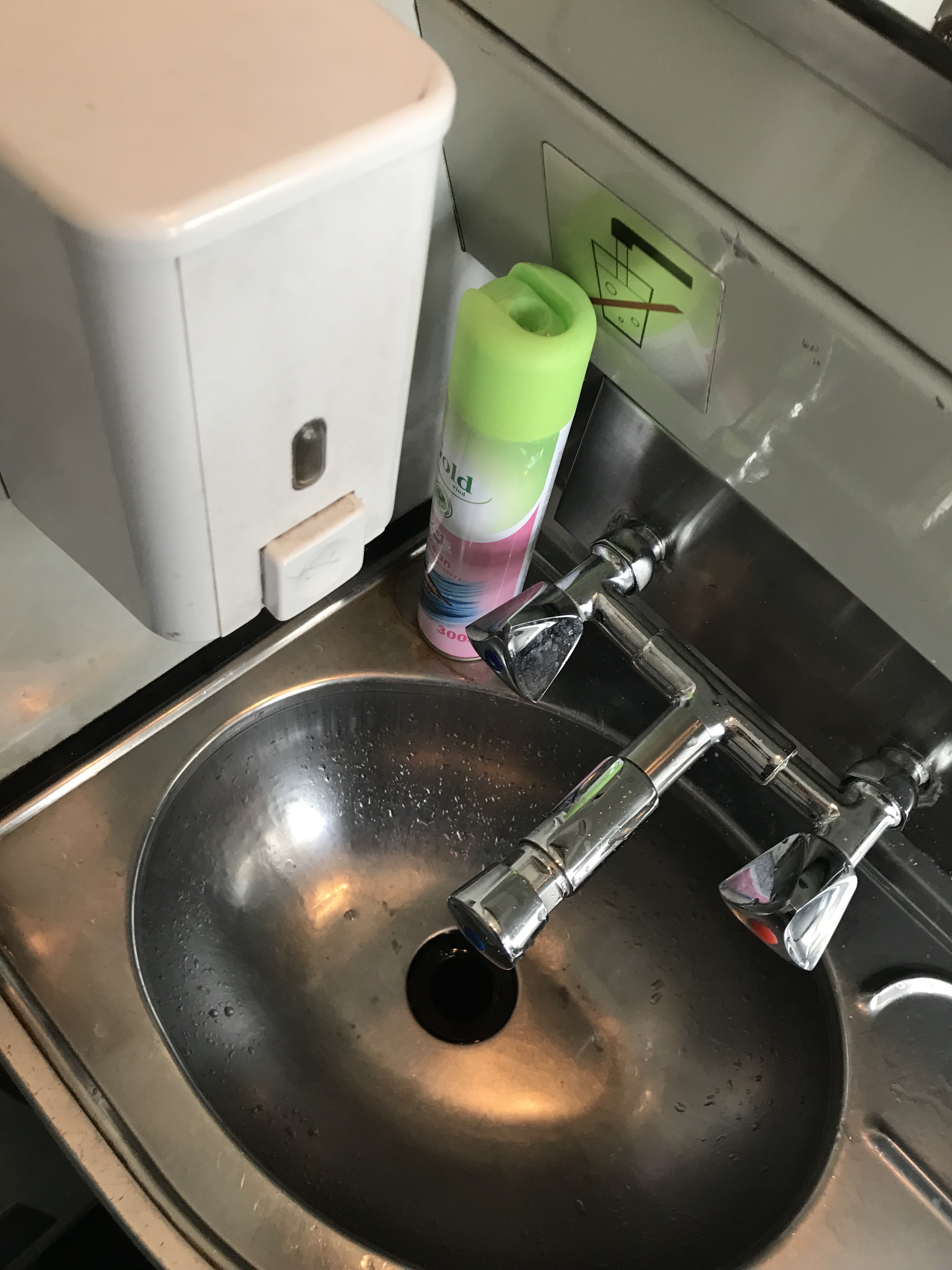 Bathroom sink in the train
Bathroom sink in the train
☑ T-shirts x4
Bring solid-colored t-shirts and wear the hell out of them.
☑ Adidas track pants
Adidas track pants will help you blend into the urban russian environment better than camouflage. Plus, they’re great for the occasional exercise and the long hours of lounging aboard the train.
 Adidas track pants might help you blend in but they won’t help you get a deeper squat.
Adidas track pants might help you blend in but they won’t help you get a deeper squat.
☑ Jeans
Hiking pants—especially those with cargo pockets and zippers at the knees for conversion into shorts—will out you as a tourist almost as much as an american flag draped around your shoulders. For days when you want to blend in but not look like a schlepper from the outskirts, a pair of faded jeans will suit you for walks around town, museum tours, nights at the bar, and even light hikes.
☑ Shorts
Something for the warmer days.
 A simple outfit of shorts, t-shirt, and sneakers works anywhere from Moscow to the temple-laden shores of Lake Baikal.
A simple outfit of shorts, t-shirt, and sneakers works anywhere from Moscow to the temple-laden shores of Lake Baikal.
☑ Underwear x5
Three pairs of ExOfficio underwear—the anti-microbial, quick-drying, $20-a-pair underwear that bear the tagline “one pair, 17 countries” on its cover—are more than enough if you can find a way to do laundry once a week. I went overboard with five in consideration of my cabin-mates in case I wouldn’t get the chance to do laundry before one of the three-day segments aboard the train. It felt extravagant.
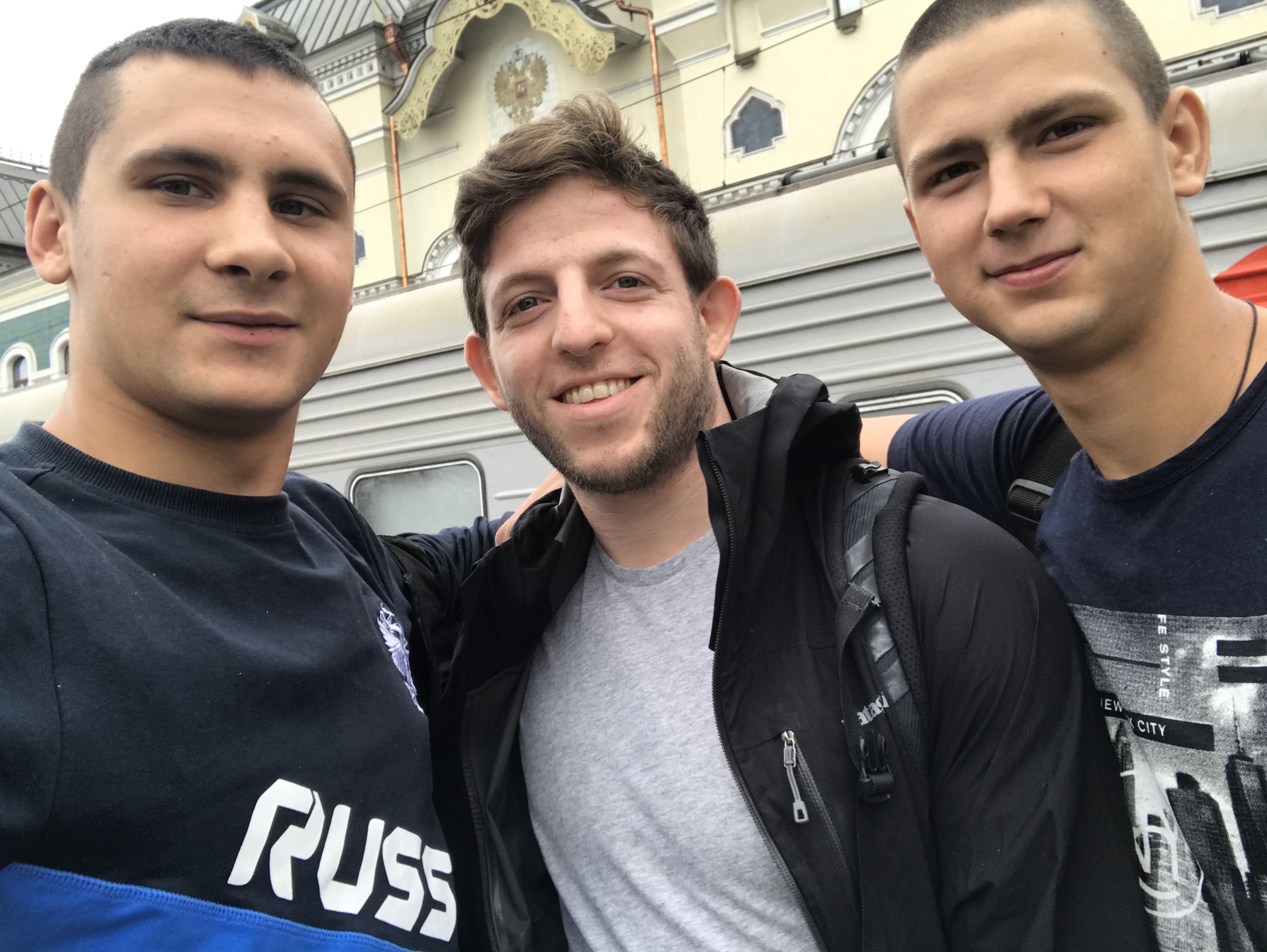 Arriving in Vladivostok with new friends after 3.5 days on the railway.
Arriving in Vladivostok with new friends after 3.5 days on the railway.
☑ Socks x4
Everybody wears socks, so bring some. What more is there to say about this.
☑ Running shoes
A comfortable pair of dark running shoes is perfect for mild hiking, running from a bad situation, walking around the city without looking like a tourist. (The athleisure trend isn’t as strong in Russia just yet, but a pair of Nikes will blend in better than hiking boots.)
When I pulled up to Washington Dulles airport after a nail-biting two-hour drive in traffic, I had 20 minutes to get on the plane before the doors shut. Although I have to thank the rule-bending check-in agents, the understanding people in the security line, the well timed terminal shuttle, and the escalator riders who complied with my excuse-me-thank-yous, my decision to wear running shoes instead of rigid hiking shoes helped me get onto the plane with a whole five minute to spare before the doors shut.
☑ Light jacket
West of the Ural mountains, in Siberia, there’s always a chance of encountering cool days or evenings. Warm weather never reaches Lake Baikal or Vladivostok, where summers are cool and overcast like Seattle. A light down jacket can serve double duty as a pillow when folded.
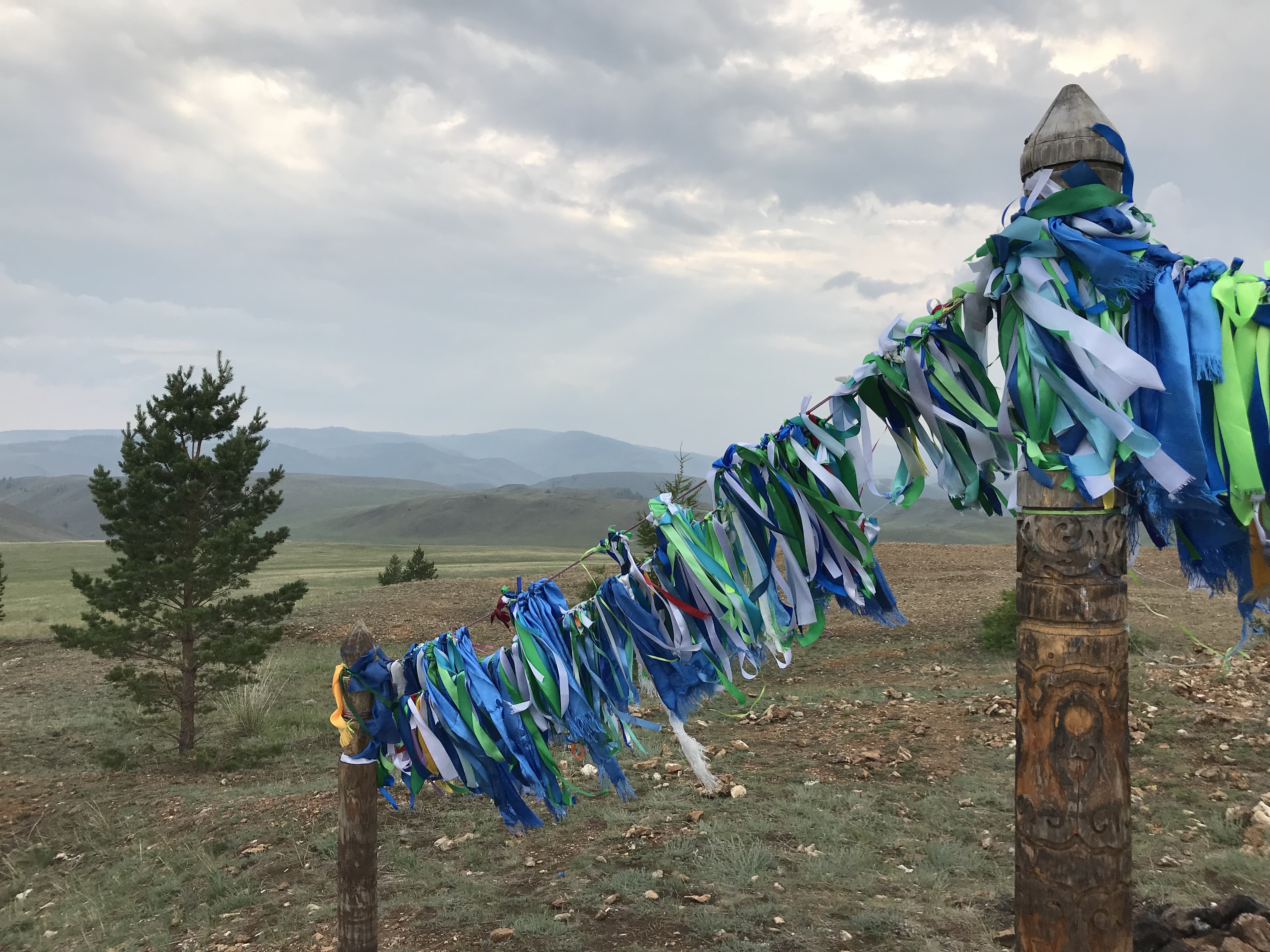 A cool and overcast June day in Siberia.
A cool and overcast June day in Siberia.
☑ Light raincoat
A light rain shell is great for warm but rainy days, which is a frequent occurrence in Vladivostok. Layer it with the light jacket to stay warm and dry on Olkhon Island (on Lake Baikal). Also doubles as a bedsheet when sleeping on benches.
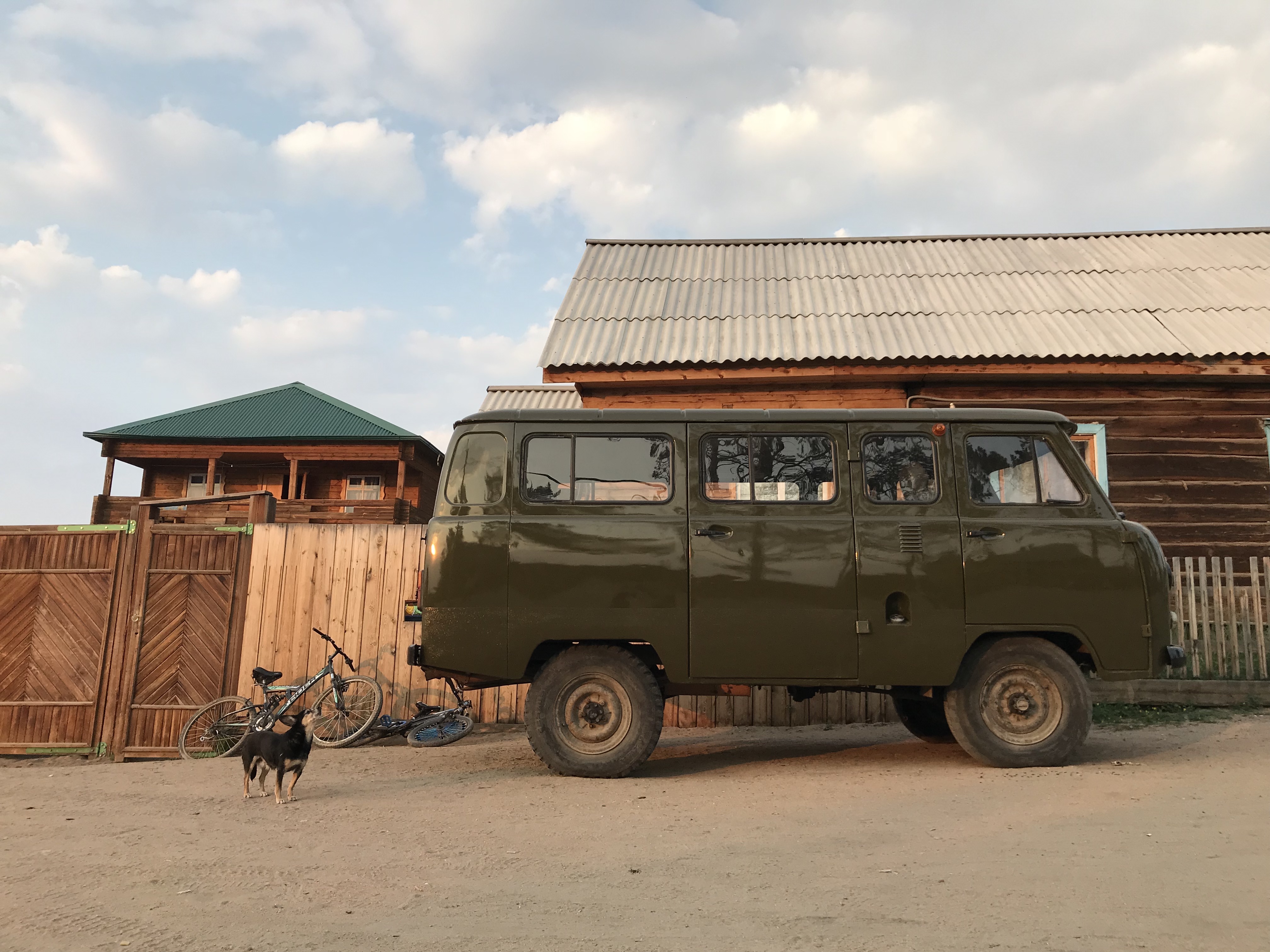 A scene on Olkhon Island, on Lake Baikal.
A scene on Olkhon Island, on Lake Baikal.
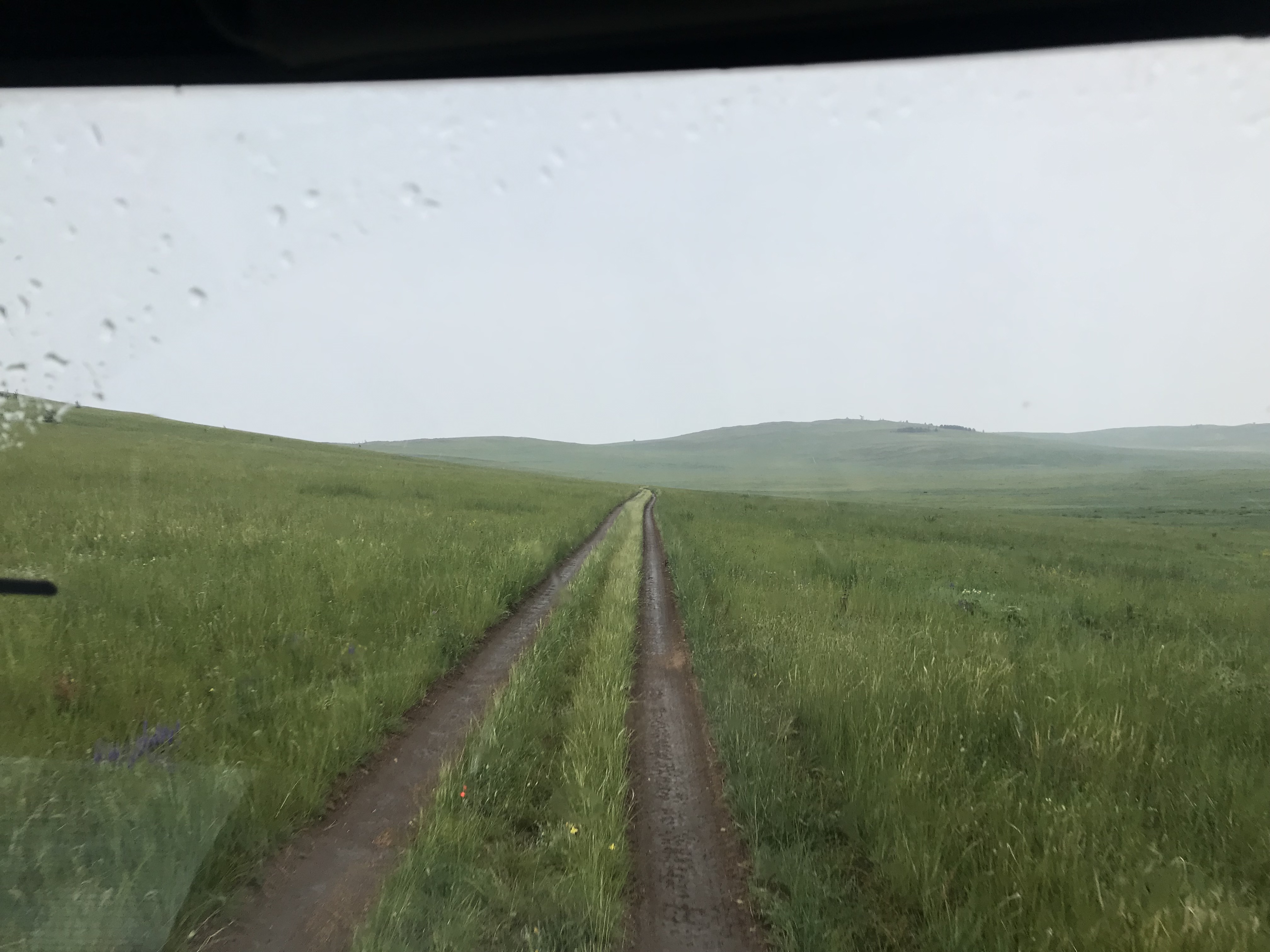 Rainy drive on road-less Olkhon Island.
Rainy drive on road-less Olkhon Island.
What Not to Bring
You might be wondering what’s missing or what’s unnecessary…
Expensive and bulky devices
If it’s too valuable to lose then it should be small enough to have on you at all times: passport, wallet, iPhone.
Anything larger, like iPads, will make you worry about it every time you step off the train for fresh air during during the 15-minute stops. You might forget it on the train, then the conductor will take it and ask me how to unlock it, reasoning to me that it doesn’t make sense to report it or try to find the international owner, then I will agree and look up how to reset an iPad, then I will draw the instructions on a piece of paper for her like an Ikea assembly manual.
Bedding (sheets, pillows, blankets)
Bedding is provided by the conductor after boarding. It’s delivered in a plastic bag, and you are expected to make the bed yourself. Before getting off the train, you pack up your bedding and bring it back to the conductor.
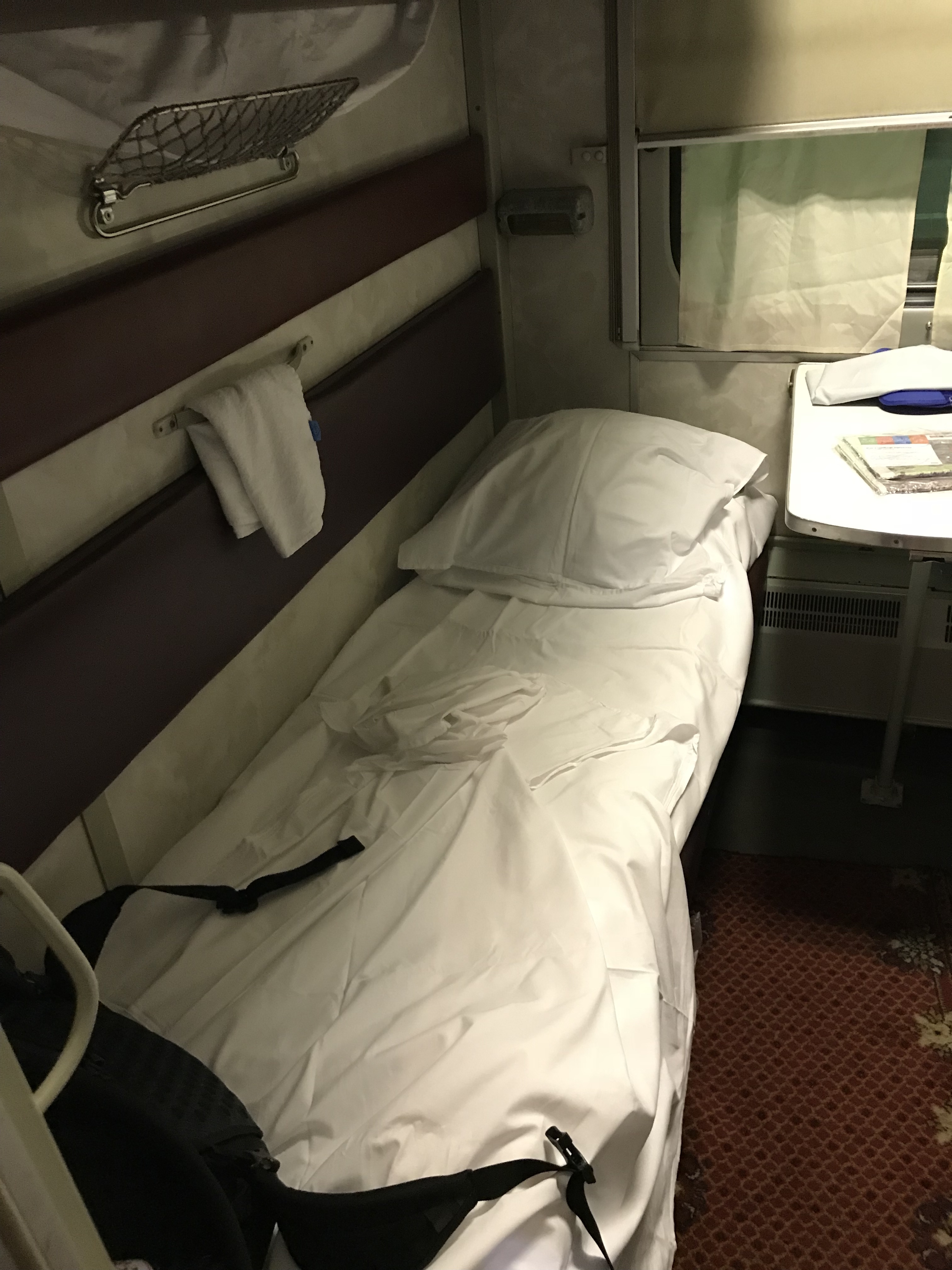 Provided bedding includes bedsheet, pillow with pillowcase, sheet cover, and blanket (not pictured).
Provided bedding includes bedsheet, pillow with pillowcase, sheet cover, and blanket (not pictured).
Slippers
The bag of bedding includes disposable slippers, which you might deem silly at first but then realize the cultural and practical importance of wearing slippers in Russia. Put them on.
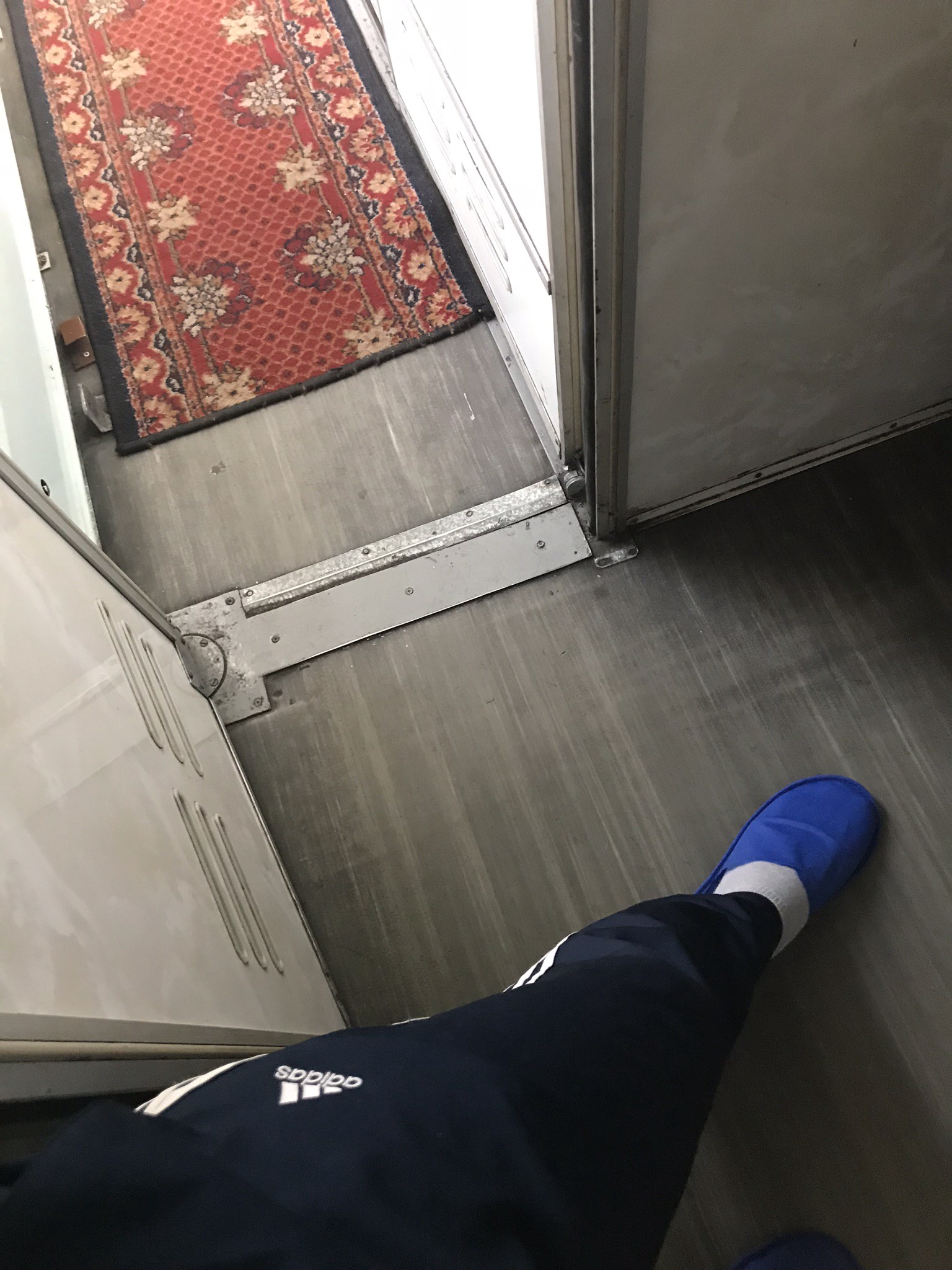 Disposable slippers provided to all passengers.
Disposable slippers provided to all passengers.
Drinking cup
All passengers get a drinking glass and glass holder to use during the trip. If you don’t get one, ask the conductor. You do not have to pay for it, but you do have to return it before deboarding. Not only is it safe to drink hot tea from it, it might as well be a national law that you do so, again and again.
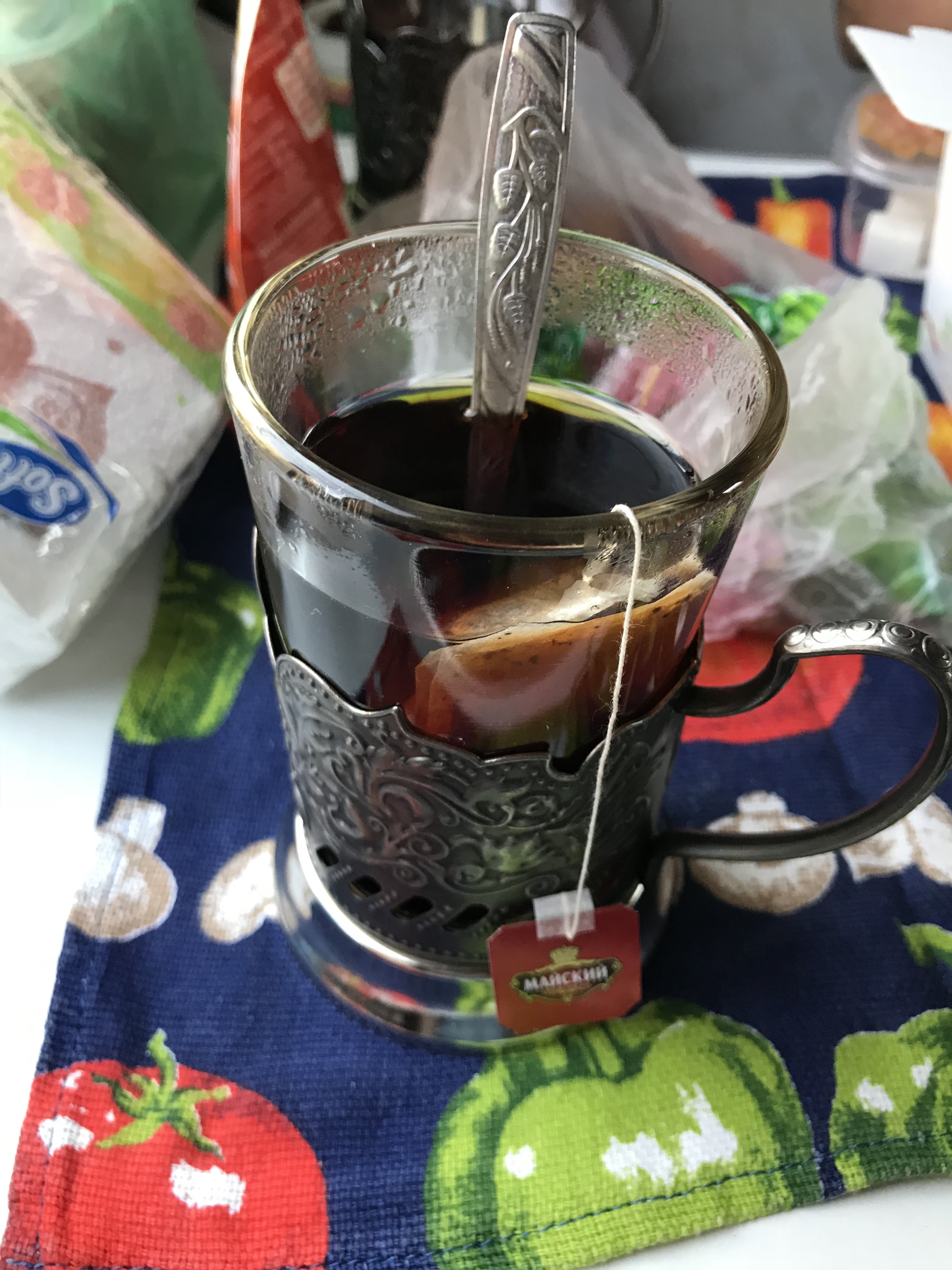 Glass and glass holder provided to passengers.
Glass and glass holder provided to passengers.
Snacks and food for the train
Tickets for 2nd-class cabins include one meal for the segment, no matter how many days that segment takes. You can choose whether you get the meal during lunch or dinner time, and you can choose which day you get it.
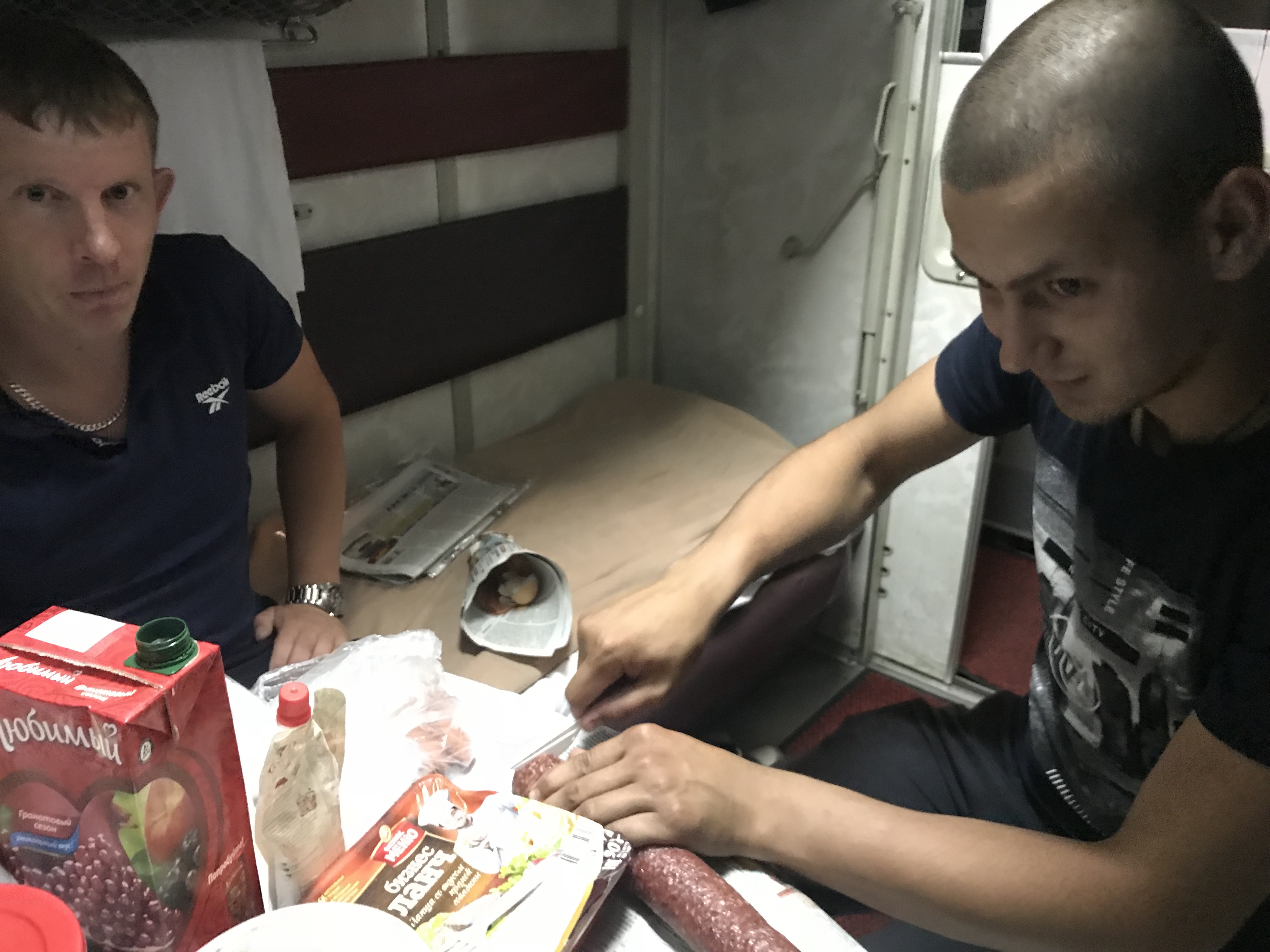 Russian cabin-mates sharing food from home, as customary.
Russian cabin-mates sharing food from home, as customary.
Instead of bringing a weeks’ worth of food from abroad, stop by a local food store and stock up for the next train segment. Common and practical items include:
- Instant noodles in a cup. Just add boiling water from the water kettle—located in every car—and wait a few minutes.
- Instant mashed potatoes in a cup.
- Instant anything in a cup.
- Tea bags
- Trail mix (mix of dried fruit and nuts)
- Fruit
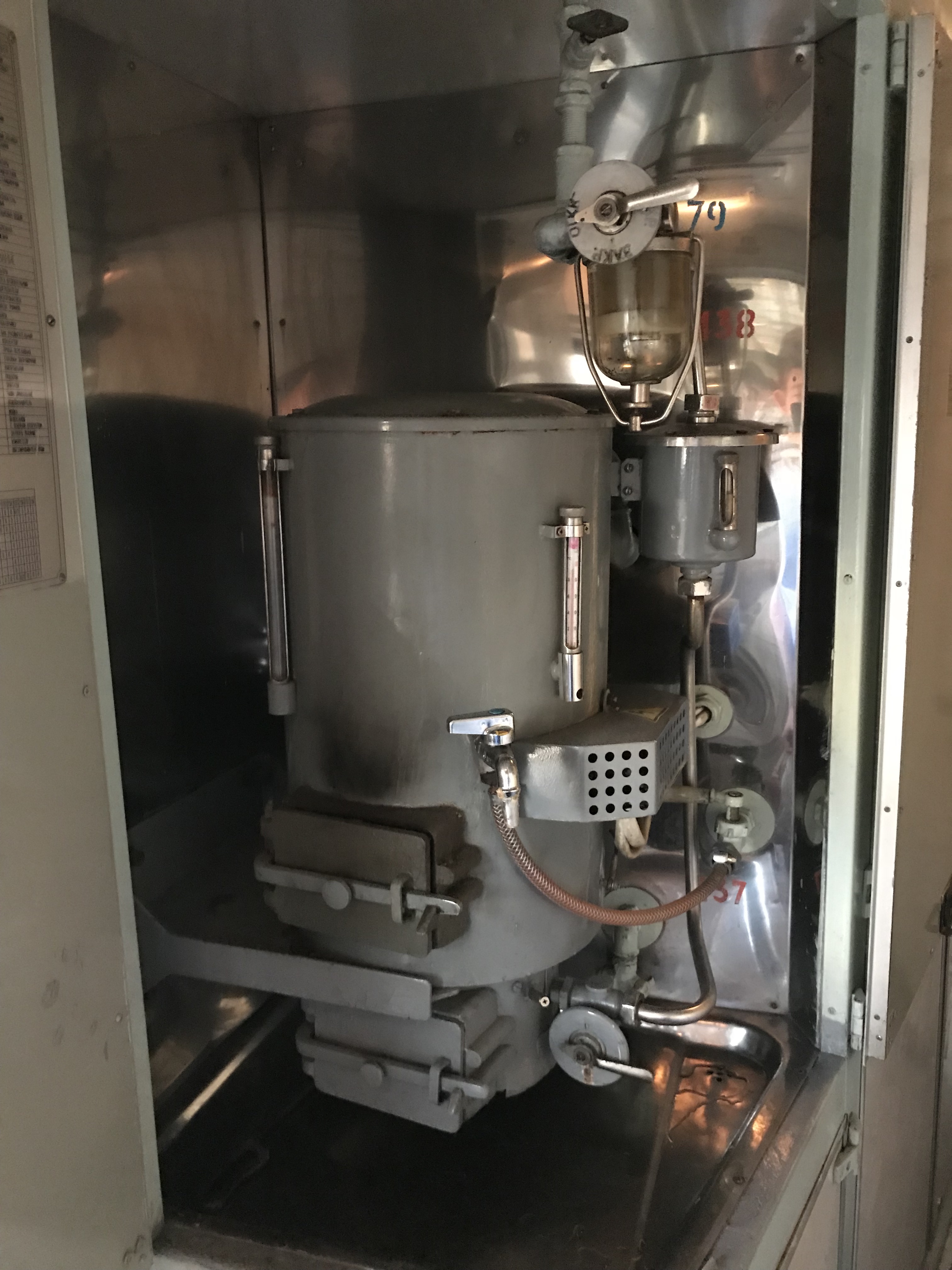 A water heater provides scalding water in every car.
A water heater provides scalding water in every car.
 Preparing instant ramen noodles for breakfast, lunch, and dinner.
Preparing instant ramen noodles for breakfast, lunch, and dinner.
If you get acquainted with your cabin-mates, they might offer some of their food to you. This is customary, as is accepting the offer and sharing something in return. In anticipation of this, buy something special at the food store to share with your new friends, such as premium sweets (Ferrero Raffaello was my go-to), fresh fruit, or gourmet tea.
 Train-provided meal supplemented by fresh tomatoes brought from home and shared with others.
Train-provided meal supplemented by fresh tomatoes brought from home and shared with others.
Many stops along the route have newsstands or food vendors right on the platform, so you can refill on necessities like tea or pickles.
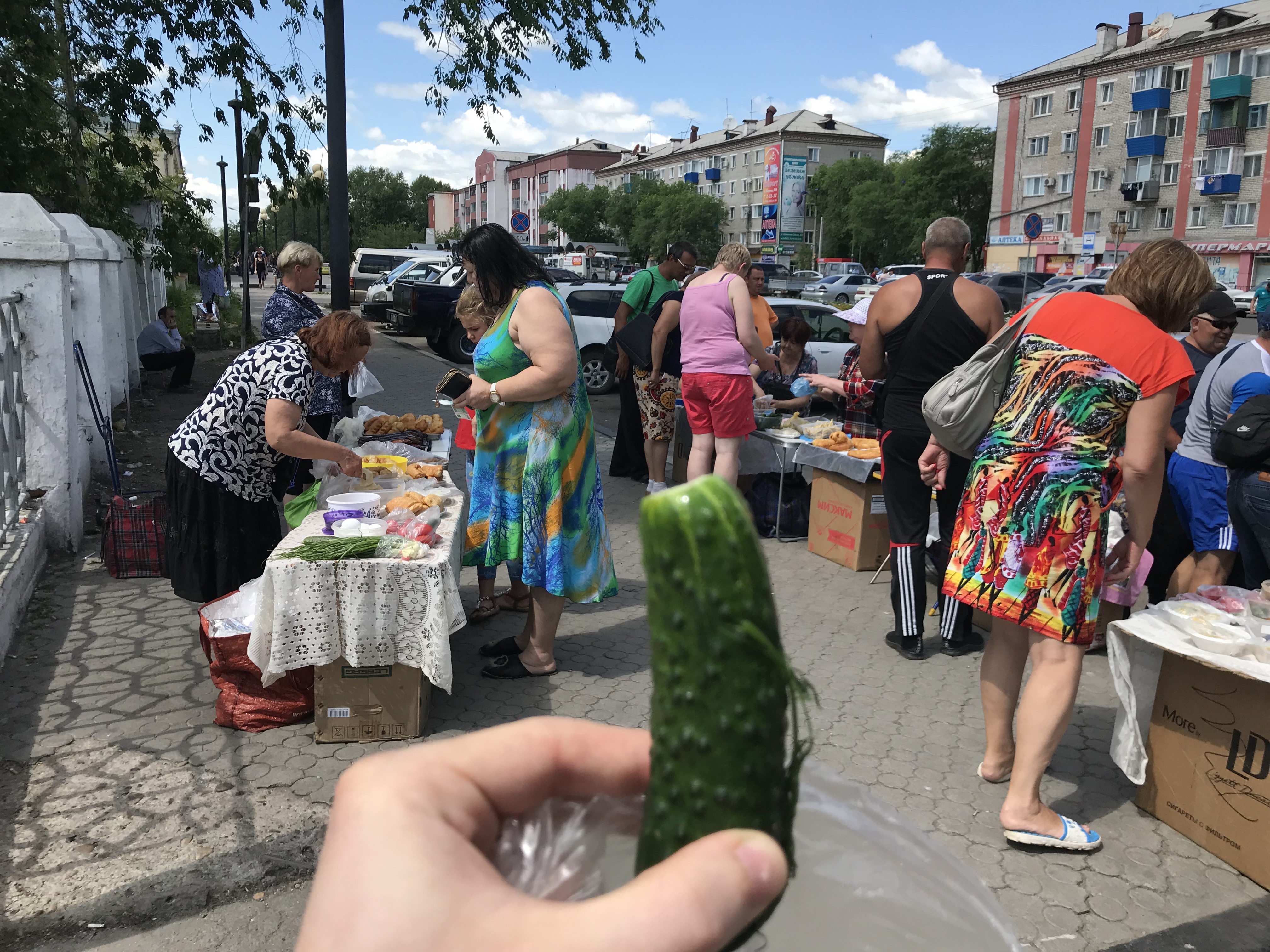 Fresh produce is sold near some train stations.
Fresh produce is sold near some train stations.
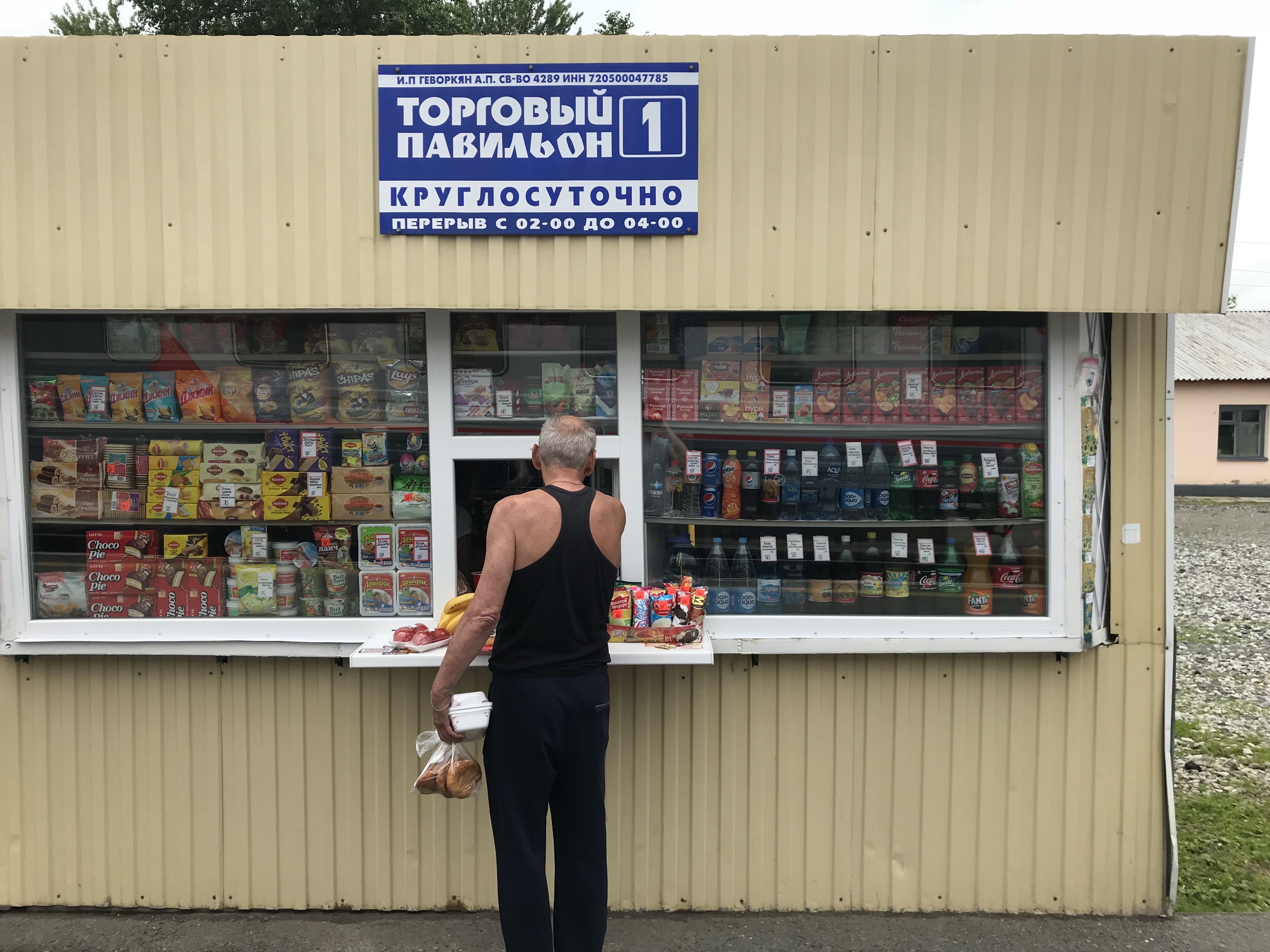 Typical newsstand at a train stop along the route.
Typical newsstand at a train stop along the route.
Alcohol (beer and liquor)
Despite the cartoonish image we have of Russians as vodka-chugging, bear-riding hooligans, you will not encounter much drinking on the train. Drinking alcohol is prohibited anywhere outside of the restaurant car, and conductors enforce this.
Even in the restaurant car, there isn’t much drinking because the vast majority of passengers are there because they’re going to/from relatives, or to/from the army, and not to party. The inevitable individual or group that drinks too much in the restaurant car will be seen by the crew and passengers as degenerates, so don’t be one of them.
An occasional beer, purchased in the restaurant car, is fine. Some occasion might even necessitate it, such as a live concert from a Californian band or celebrating July 4th with new Russian friends. Na zdorovie.
 Celebrating Independence Day with beer abord the Trans-Siberian Railway.
Celebrating Independence Day with beer abord the Trans-Siberian Railway.